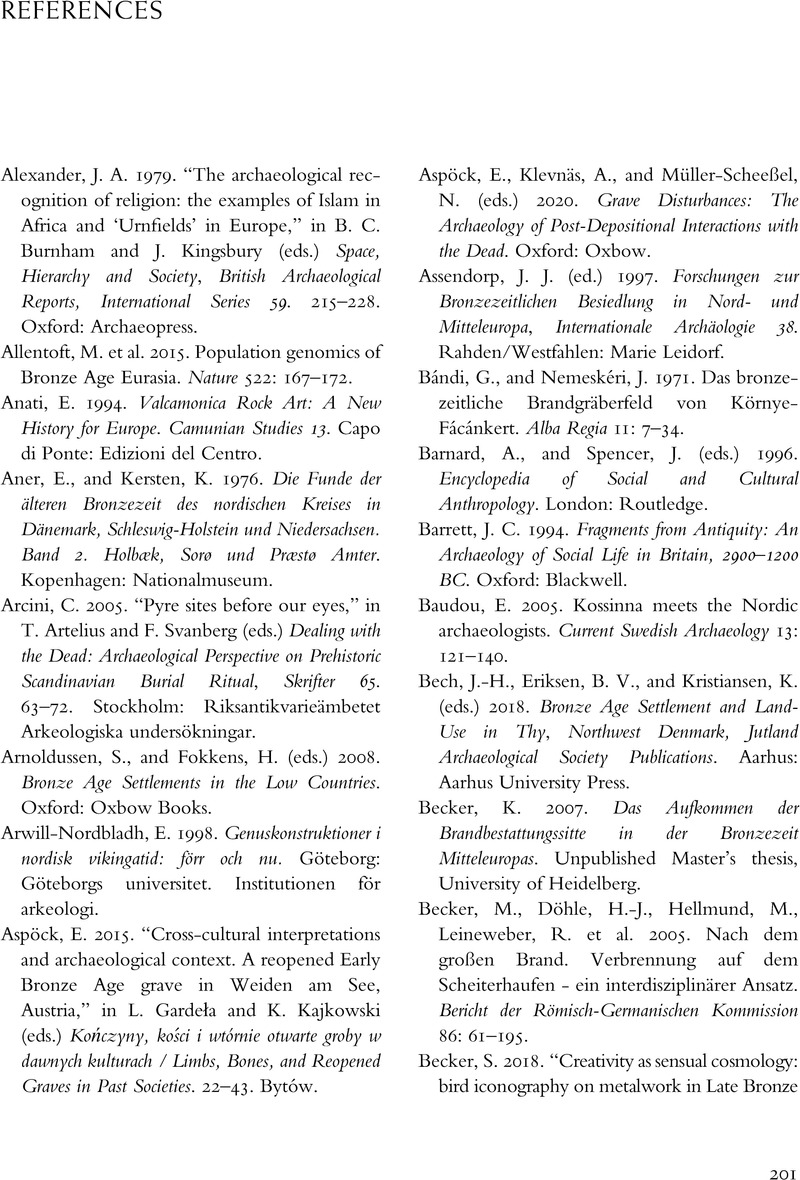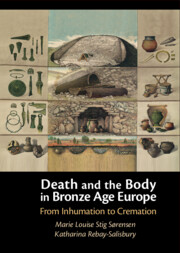Book contents
- Death and the Body in Bronze Age Europe
- Death and the Body in Bronze Age Europe
- Copyright page
- Contents
- Figures
- Tables
- Acknowledgements
- One Introduction
- Two A Brief History of Urns, Urnfields, and Burial in the Urnfield Culture
- Three Theoretical Framework
- Four The Bronze Age
- Five The Changing Bronze Age Body
- Six The Treatment of the Body
- Seven The Construction of Graves
- Eight After the Burial
- Nine Conclusions
- References
- Index
- References
References
Published online by Cambridge University Press: 22 December 2022
- Death and the Body in Bronze Age Europe
- Death and the Body in Bronze Age Europe
- Copyright page
- Contents
- Figures
- Tables
- Acknowledgements
- One Introduction
- Two A Brief History of Urns, Urnfields, and Burial in the Urnfield Culture
- Three Theoretical Framework
- Four The Bronze Age
- Five The Changing Bronze Age Body
- Six The Treatment of the Body
- Seven The Construction of Graves
- Eight After the Burial
- Nine Conclusions
- References
- Index
- References
Summary

- Type
- Chapter
- Information
- Death and the Body in Bronze Age EuropeFrom Inhumation to Cremation, pp. 201 - 224Publisher: Cambridge University PressPrint publication year: 2023



